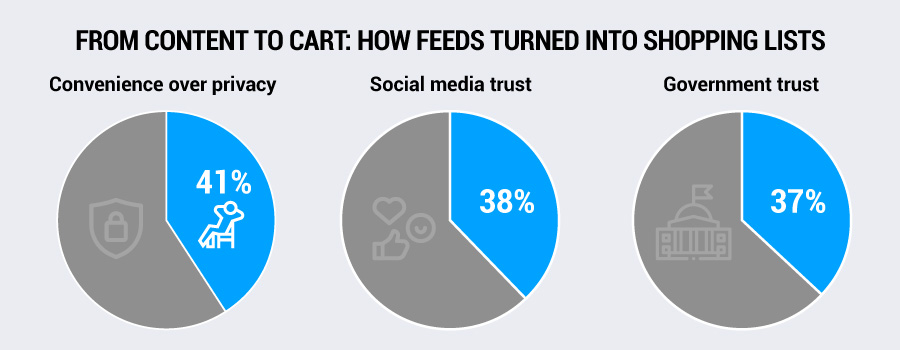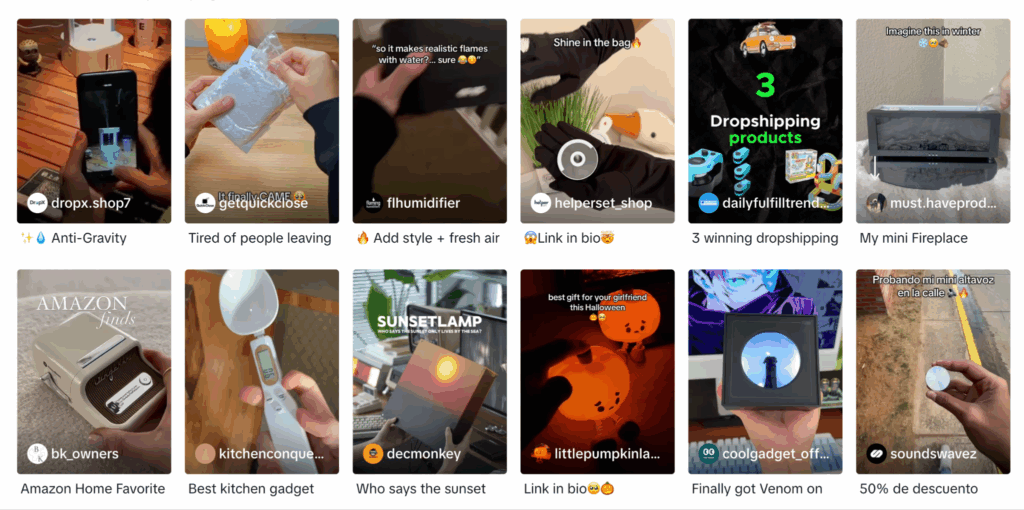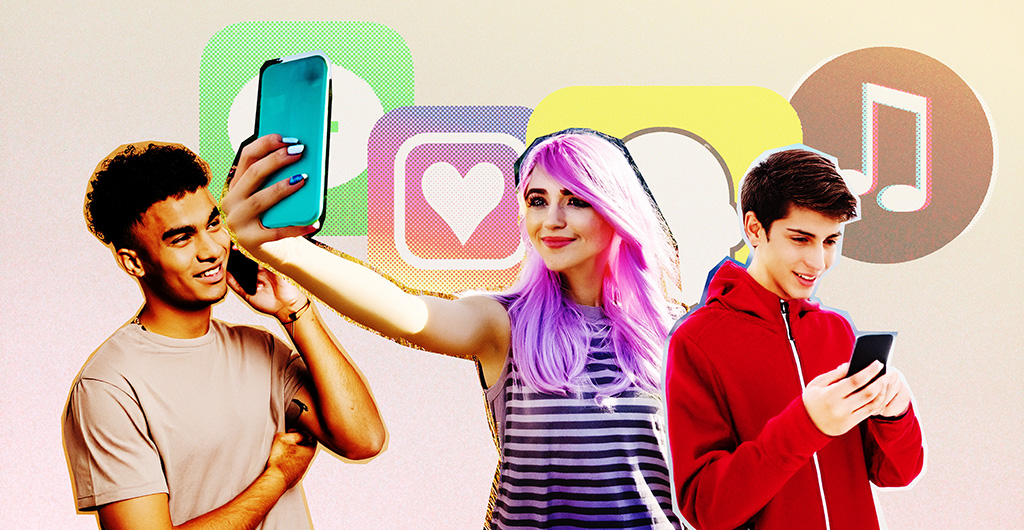Marketing has always been shaped by the people it speaks to. Every generation brings new habits, preferences, and cultural context. Strategies that worked for one often fall flat with the next. From Baby Boomers to Millennials, generations have influenced not just what brands say, but how they say it.
Paying attention to demographics requires more than following numbers on a chart. It means recognizing that each generation grows up with unique experiences that shape how they view the world, build trust, and interact with brands. A campaign that resonates with one group can feel outdated or intrusive to another.
So, successful marketing strategies evolve alongside consumers. What worked in the past might not work the same way today. Understanding the values and expectations of each generation is necessary to build relevance and long-term relationships.
Who Generation Z is, and why they matter
Gen Z, born from the mid-1990s through the early 2010s, is the first generation of “digital natives” who grew up fully online. They’re diverse, socially aware, and vocal about the issues they care about.
According to UN data, the 10–24 age group already makes up about 24 percent of the global population, placing Gen Z (by most definitions) in the range of 20–25 percent of the world. It’s a remarkable share of future consumers and culture makers.
As a generation, they have never known life without the internet. They grew up with a computer nearby, a smartphone within reach, and social platforms shaping how they connect, shop, and see the world. Some were double-tapping screens and streaming cartoons long before they could even sound out the words they were consuming. From childhood, their online spaces have been filled with marketing messages, pop-ups, and sponsored posts.
As consumers, Gen Z is influenced by what they see and share online, often favoring brands that reflect their values and communicate authentically. In the workplace, they’re challenging outdated models and pushing for flexibility, collaboration, and transparency. For marketers and businesses alike, this generation is setting new expectations for trust, personalization, and engagement within digital spaces.
That being said, what worked in the past — the mass campaigns of the 1980s,1990s, and early 2000s — for this new generation of consumers feels old and generic. To Gen Z, it’s not classic. It’s just outdated. And in most cases, one-size-fits-all strategies often come across as noisy, even intrusive.
From content to cart: How feeds turned into shopping lists
For Gen Z, content isn’t just for entertainment, it’s a shopping channel. The videos they watch, the creators they trust, and the stories they share directly shape what they buy. Research from Winning Gen Z: A Marketer’s Guide to Digital Trust shows that while they’ll trade data for value, they’re also more cautious than ever about how that data is used. Nearly 46 percent say they click “accept all” on cookie banners less often than three years ago, showing how selective consent is becoming a norm

The connection is visible in viral trends like “TikTok made me buy it.” From beauty products to kitchen gadgets, these short, authentic videos have turned obscure items into overnight bestsellers. A recommendation from a micro-influencer or a piece of user-generated content (UGC) feels more trustworthy to Gen Z than a polished TV commercial, and that trust translates into sales.

Most Gen Z say they prefer content that feels authentic over polished advertising, and their purchasing decisions are shaped by inspiration found in their feeds. According to research by Archrival, 71 percent of Gen Z say they’re always open to discovering new brands, and more than three in ten use social media as their primary source of inspiration for fashion and beauty purchases
Influencers remain key trendsetters, with 51 percent believing social media creators start new trends, far outweighing celebrities or brands themselves.
This blurs the old line between “brand awareness” and “conversion.” When content and consumption are closely linked, campaigns need to show up where Gen Z is already paying attention — in their feeds. And they need to do so with stories that feel native to the platforms they use.
The power of preference
Today’s algorithms know us almost too well. Streaming platforms like Netflix not only recommend what to watch next, they even change the thumbnail image of a show or movie to match what’s most likely to catch our eye. Social platforms take it further: every like, scroll, and skip fine-tunes the feed until it feels uniquely ours.
But while algorithms predict, preference directs. Consumers of today don’t just rely on machine learning to shape their experience, they actively curate it. They follow the creators they trust, block the ones they don’t, and gravitate toward platforms that reflect their values. This constant act of choosing doesn’t just shape what they see online — it shapes which brands they engage with and, ultimately, what ends up in their carts.
Take Spotify Wrapped. On the surface, it’s just a year-end playlist. In reality, it’s a cultural moment built entirely on individual preferences. Each listener gets a story tailored to their habits and then shares that story proudly with friends. That blend of personalization and storytelling demonstrates how powerful preference can be in shaping not just digital experiences, but brand affinity.
The opportunity for marketers lies in weaving into these curated spaces in ways that feel natural and relevant. Brands that respect preference can shift from being an interruption on Gen Z feeds to becoming part of the experiences they choose for themselves.
Personalization done right
Personalization without trust misses the point. The new generation of consumers doesn’t want to be targeted, they want to be understood. They expect experiences that feel tailored, but they’re quick to push back when it crosses into “creepy.” A targeted ad that seems to know too much can feel invasive. A recommendation that reflects their stated interests feels relevant. The difference is trust.
That’s why personalization done right starts with transparency, consent, and context. Consumers of all generations are more willing to share data when they understand how it will be used and what the value is for them. This contextual consent — the idea that data shared for one purpose shouldn’t be repurposed for another — is central to how they judge whether a brand deserves their attention.
First-party and zero-party data play a major role here. When preferences and choices are shared directly, they create a foundation for personalization that feels natural. A playlist that mirrors your taste or a shopping app that adapts to your style doesn’t feel like surveillance, it’s value returned for information you chose to give.
The gold standard is when personalization feels human. People don’t want to be reduced to data points. They want to see themselves in the stories brands tell, whether that’s through creators they follow, communities they join, or content that reflects their values.
Done well, personalization is a way to show customers that their choices matter. But personalization alone isn’t enough. To turn relevance into resonance, brands need stories that make data feel human and experiences worth sharing.
Storytelling as strategy
The new generation of consumers doesn’t just buy products, they buy into stories. They want to know what a brand stands for, who it speaks to, and how it fits into their world. A polished ad may grab a glance, but a relatable narrative has the power to spark conversation, drive shares, and create lasting connections.
Storytelling is also where personalization becomes human. Data might shape recommendations, but stories make them meaningful. Think about Spotify Wrapped, which transforms listening habits into a story that fans can’t wait to share. Or Nike, whose campaigns consistently link individual achievement with a broader cultural message, blending personal empowerment with social awareness.
Even Duolingo has carved a space on TikTok, using humor and a quirky mascot to tell stories that resonate with Gen Z’s playful side, and making language learning feel like part of a cultural moment. These examples succeed because they show, rather than sell. They meet people in the spaces they already inhabit, and speak in a voice that feels authentic to the platform and the audience.
Brands need to become part of the stories people choose to engage with. That could mean collaborating with creators who embody your message, spotlighting user-generated content, or building campaigns that feel like part of a shared experience.
While metrics like clicks and impressions still matter, it’s stories that build memory, trust, and long-term loyalty. In a digital world shaped by preference and choice, storytelling is the bridge that turns awareness into affinity. And that affinity is where the real shift happens.
From clicks to connections: The new marketing measurement
For years, marketers measured success by clicks, conversions, and impressions. But for the new generation of consumers, those numbers don’t tell the whole story. They don’t just want ads that chase attention. They want relationships with brands that respect their choices, reflect their values, and add something meaningful to their lives.
Gen Z is showing that what matters most isn’t reach; it’s relevance. They reward transparency, prefer brands that personalize without overstepping, and engage most with stories that feel authentic. Their behaviors make it clear: trust, transparency, and connection are the new performance metrics.
Marketers need to shift their focus. Success is no longer a matter of getting seen, it’s about getting chosen. It’s about being invited into curated spaces, delivering personalization that feels human, and telling stories that people actually want to share. Those are the signals that lead not just to sales, but to loyalty.
The brands that thrive in this new era won’t be the loudest. They’ll be the most relatable, the most respectful, and the most relevant. Beyond clicks and conversions, what Gen Z really wants is trust, and marketers who can earn it.

